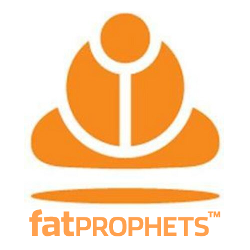Karyopharm Therapeutics Inc. (Nasdaq:KPTI), a clinical-stage pharmaceutical company, today announced multiple presentations of clinical data from an ongoing Phase 1 trial of its lead drug candidate, Selinexor (KPT-330), in patients with hematologic malignancies at the 2014 American Society of Clinical Oncology (ASCO) Annual Meeting in Chicago, IL.

The data indicate that first-in-class oral Selinexor showed continued evidence of anti-cancer activity as a single agent in patients with heavily pretreated Non-Hodgkin’s Lymphoma (NHL) and Acute Myeloid Leukemia (AML) who had progressive disease on study entry.
Patients with relapsed and/or refractory NHL, including DLCBL and Richter’s Syndrome, had a disease control rate (stable disease or better) of 74% across all doses of Selinexor; the overall response rate (ORR; partial response or better) was 28%. Responses were observed across all subtypes of NHL and independent of genetic abnormalities. Amongst 63 evaluable patients with heavily pretreated (median 3.5 prior therapies) and progressive AML, the complete response (CR) rate with or without full hematologic recovery was 11%, the ORR was 16% and the disease control rate was 49%; 16 (25%) of the 63 patients with AML were not evaluable but were included in the AML response rate calculation. Responses were observed across multiple genetic subtypes of AML.
In both NHL and AML patient populations, side effects, which were generally low grade and typically gastrointestinal in nature, or fatigue, showed minimal dose response, in part due to the prophylactic use of standard supportive care. These common side effects decreased over time, permitting prolonged administration of Selinexor. Patients have remained on single agent oral Selinexor over one year. Major organ dysfunction or clinically significant cumulative toxicities have not been observed.
“We continue to be encouraged by the results and tolerability of oral Selinexor. The data presented today at ASCO further demonstrate the potential of Selinexor as a single agent for patients with relapsed or refractory hematologic malignancies who had previously progressed after available therapies,” commented Sharon Shacham, Ph.D., Karyopharm’s Founder, President and Chief Scientific Officer. “We have seen broad anti-cancer activity with rapid shrinkage of lymph nodes across all types of heavily pretreated NHL studied to date, including DLBCL subtypes that are often difficult to treat. We have been similarly impressed with the activity of Selinexor in patients with AML. The data further support our decision to move forward with registration-directed studies in AML, Richter’s Syndrome and DLBCL.”
Non-Hodgkin’s Lymphoma:
Dr. Martin Gutierrez from Hackensack University Medical Center, Hackensack, NJ, gave an oral presentation (Abstract #8518) with updated clinical trial data for patients with numerous NHL subtypes who were evaluated in Phase 1. Fifty-one patients, with mean prior treatment regimens of 4.1, received Selinexor orally 2-3 times per week across 10 dose levels (3 – 80 mg/m2). Grade 3/4 non-DLT adverse events (AEs) occurring in more than three patients included thrombocytopenia (20%), neutropenia (16%) and hyponatremia (6%). The most common Grade 1/2 AEs were nausea (51%), anorexia (41%) and fatigue (36%). The maximum tolerated dose was not reached, but based on biological activity and data from additional studies, the recommended Phase 2/3 dose of oral Selinexor for NHL is 60 mg/m2 twice weekly.
Single-agent anti-tumor activity was observed across all evaluated NHL subtypes with durable cancer control observed across several patients who remained on study for longer than nine months. Responses in 43 evaluable patients are shown below. Five patients had tumors deemed not evaluable and three patients had tumors pending evaluation. In patients with heavily pretreated DLBCL, bona fide responses and disease control were nearly identical across the ABC and GCB subtypes, consistent with the broad mechanism of action of Selinexor. Among four “double hit” DLBCL patients, there was one complete response, 2 patients with stable disease (43% and 45% lymph node reductions), and one progressive disease. Double hit is a particularly difficult-to-treat subtype which overexpresses the oncoproteins MYC and BCL2 or BCL6.


 Hot Features
Hot Features













